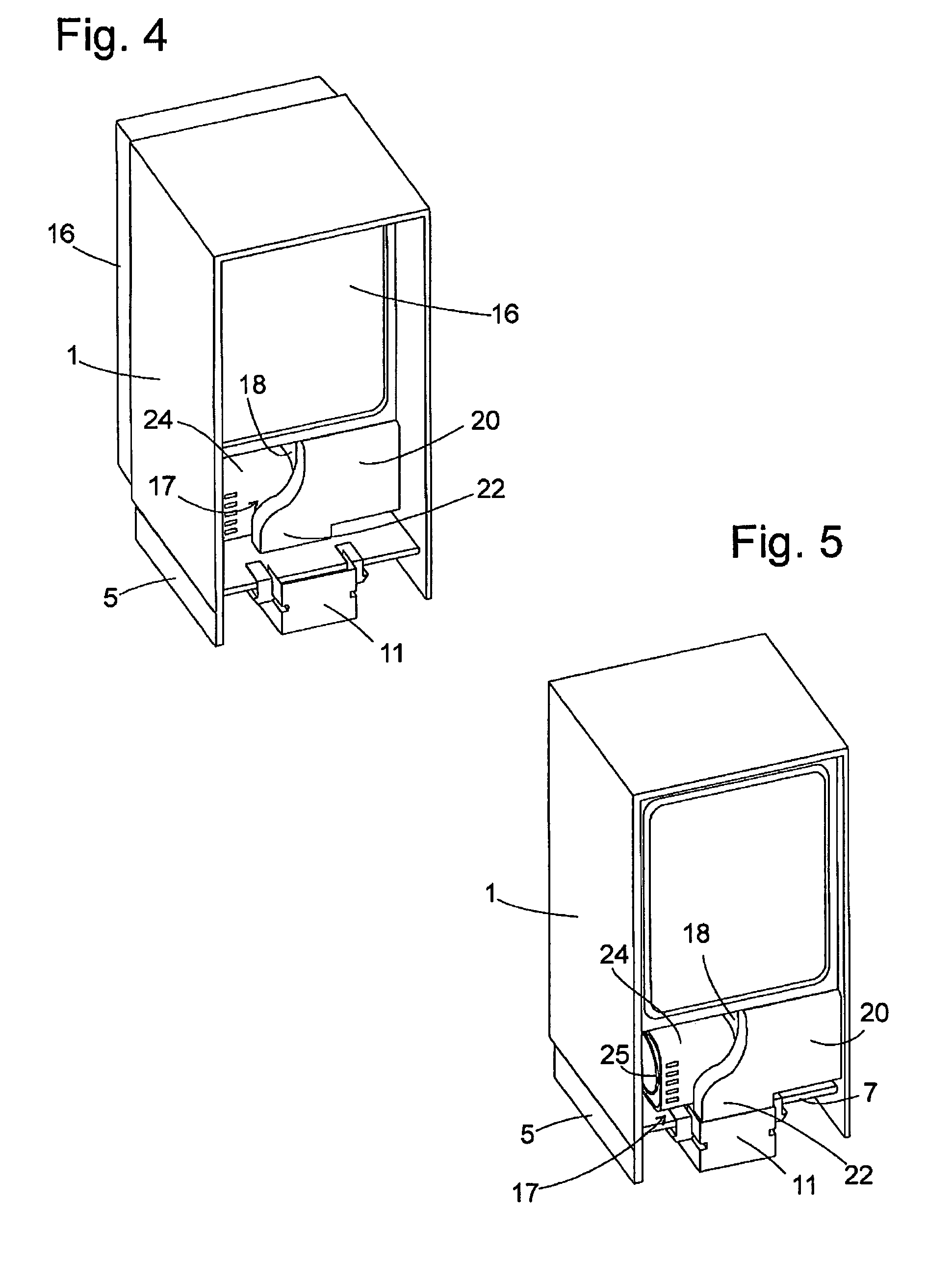Built-in refrigerator
a built-in refrigerator and refrigerator body technology, applied in the field of built-in refrigerators, can solve the problems of unsatisfactory solutions, marginal drop in the proportion of useable cooling chambers inside the carcass, and labor costs for installation of consumers which are not yet negligible, and achieve the effect of simplifying the adjustment of the cabin
- Summary
- Abstract
- Description
- Claims
- Application Information
AI Technical Summary
Benefits of technology
Problems solved by technology
Method used
Image
Examples
Embodiment Construction
[0023]FIG. 1 shows a perspective view of a cabinet, which is provided in order to accommodate a built-in refrigerator. The cabinet has a square body 1, to which a door 2 is jointed and which delimits a built-in niche, which is provided in order to accommodate the carcass of the refrigerator. A rear wall 4 of the built-in niche can form part of the cabinet body 1, it could however also be formed by a wall of a building, in front of which the cabinet is mounted. The body 1 makes contact with a hollow base section 5, on the front side of which a ventilation opening 6 is formed. A gap 8 extends across the entire width of the built-in niche 3 between the rear wall 4 and the rear edge of a base plate 7 of the built-in niche 3.
[0024]Two holding clamps 9 of carrier sections which are concealed below the base plate 7 engage with the rear edge of the base plate 7 and, between the holding clamps 9, a rear section 10 of a tray 11 shown in detail in FIG. 3, said tray extending below the base pla...
PUM
 Login to View More
Login to View More Abstract
Description
Claims
Application Information
 Login to View More
Login to View More - R&D
- Intellectual Property
- Life Sciences
- Materials
- Tech Scout
- Unparalleled Data Quality
- Higher Quality Content
- 60% Fewer Hallucinations
Browse by: Latest US Patents, China's latest patents, Technical Efficacy Thesaurus, Application Domain, Technology Topic, Popular Technical Reports.
© 2025 PatSnap. All rights reserved.Legal|Privacy policy|Modern Slavery Act Transparency Statement|Sitemap|About US| Contact US: help@patsnap.com



